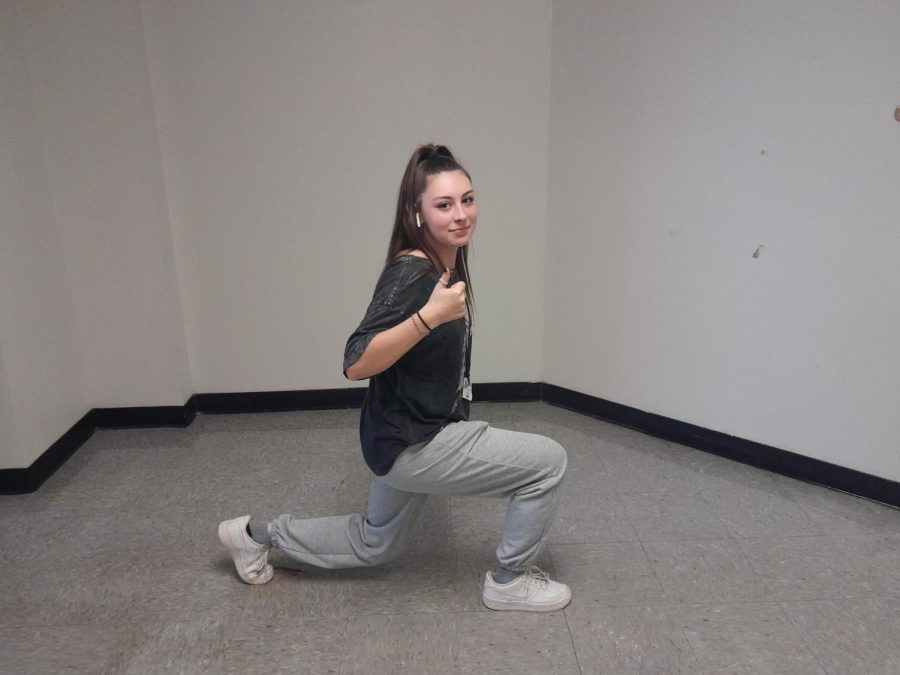Physical prosperity: A Guide for Teenagers
A quick workout • Sophomore Natalie Muhlbauer does lunges for some physical activity.
Physical activity is a crucial aspect of a healthy lifestyle, especially for teenagers. With advancements in technology and the rise of sedentary activities, such as social media and video games, teens are becoming more inactive than ever before. This lack of physical activity can lead to serious health consequences, both in the short and long term.
1. Weight
Physical activity is essential for maintaining a healthy weight. Obesity rates have been on the rise for the past few decades, and this is due in part to a sedentary lifestyle. Regular exercise can help burn calories and keep the body in shape. It can also help maintain a healthy metabolism, which is essential for preventing obesity.
2. Mental Health
Physical activity can help improve mental health. Engaging in regular physical activity has been shown to have a significant positive impact on mental health. Exercise releases endorphins, which are natural mood- boosting chemicals in the brain that can reduce feelings of stress and anxiety. Regular exercise can help reduce feelings of anxiety, depression, and stress. It can also improve self-
esteem and self-confidence, which can be crucial for teenagers who may be struggling with issues related to identity and self-worth. Exercise can also help to promote better sleep patterns, which is needed for maintaining good mental health.
3. Risks of Disease
Physical activity can improve overall health and reduce the risk of chronic diseases. Regular exercise can improve cardiovascular health, strengthen bones and muscles, and improve immune function. It can also reduce the risk of chronic diseases such as diabetes, heart disease, and certain types of cancer.
4. Academic
Physical activity can improve academic performance. Studies have shown that regular exercise can help improve cognitive function, memory, and concentration. It can also reduce fatigue and improve sleep quality, which can be crucial for teenagers who may be struggling to balance schoolwork and other responsibilities.
5. Socializing
Physical activity can provide opportunities for socialization and teamwork. Participating in sports or group exercise classes can help teenagers develop social skills, make new friends, and build relationships.
It can also teach valuable lessons about teamwork, leadership, and perseverance, which can be essential for success in both personal and professional life.
6. Parent Encouragement
Encouraging teenagers to exercise can be a challenging task, but there are some ways in which parents can help. Parents can lead by making an example and make exercise a regular part of their own routine. This will demonstrate to their teenagers the importance of exercise and encourage them to follow suit. Parents can also encourage their teenagers to participate in physical activities that they can do with them.
Physical activity is an essential aspect of a healthy lifestyle for teenagers. It can help improve physical and mental health, reduce the risk of chronic diseases, improve academic performance, and provide opportunities for socialization and teamwork. Parents and caregivers can encourage teenagers to stay active by setting a good example, providing opportunities for physical activity, and emphasizing the importance of regular exercise.
By keeping physical activity up, teenagers can set themselves up for a lifetime of good health and well- being.


